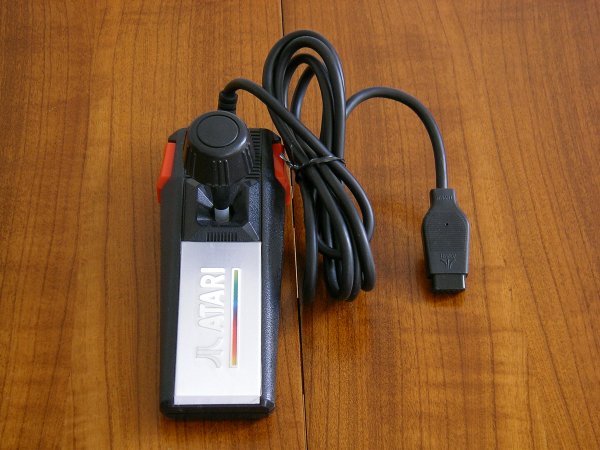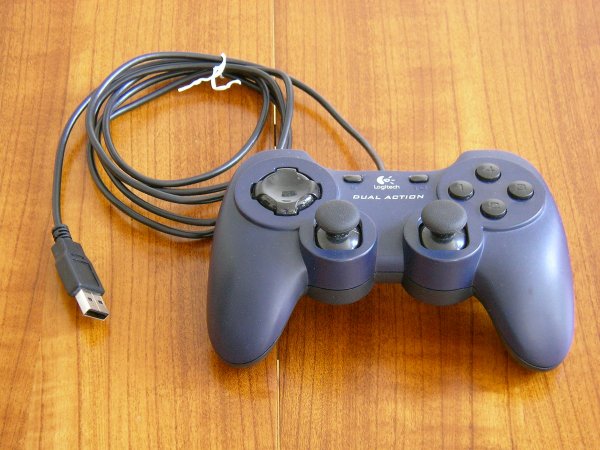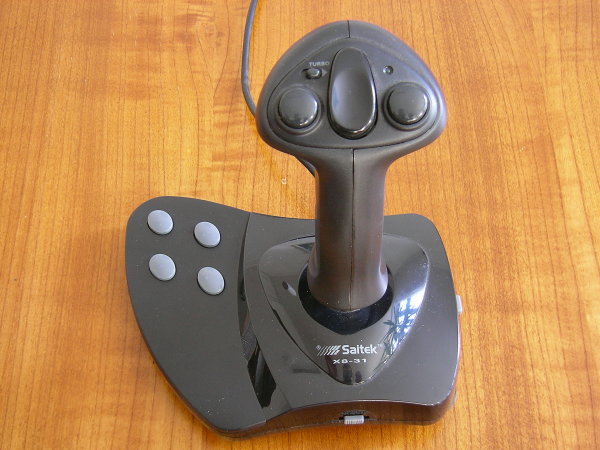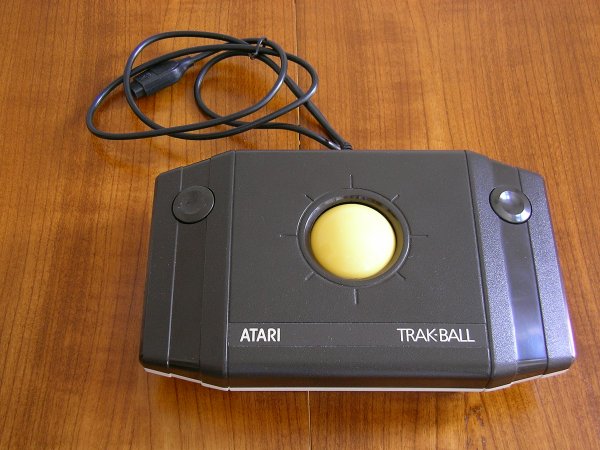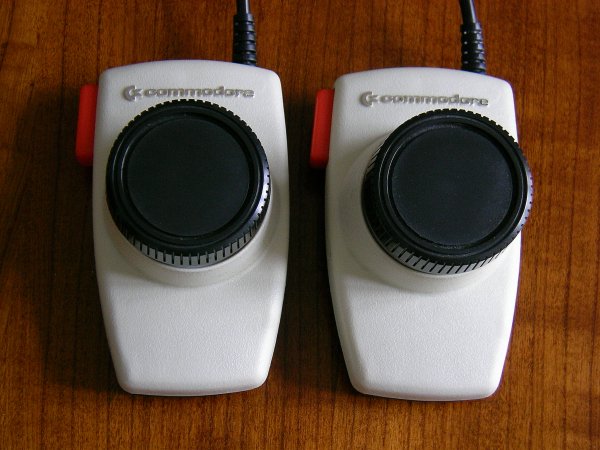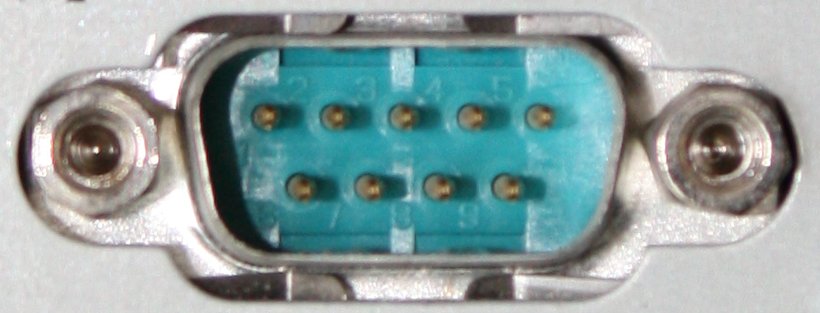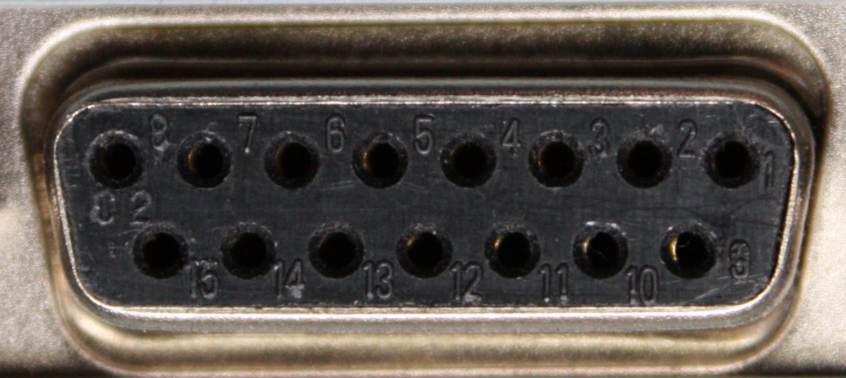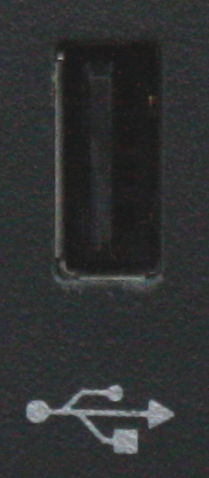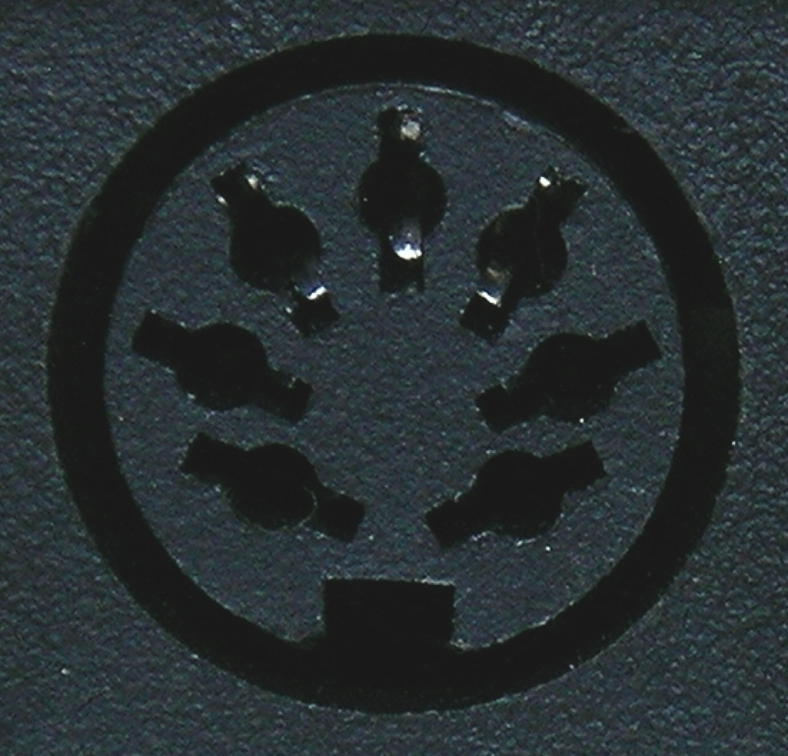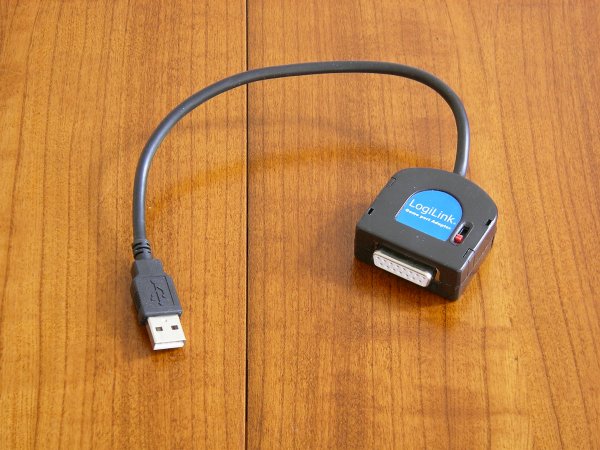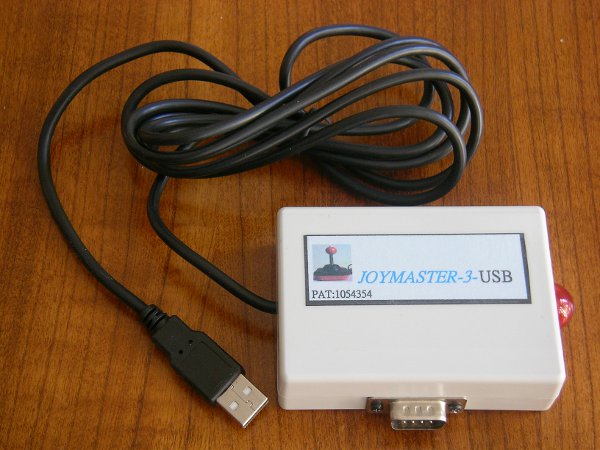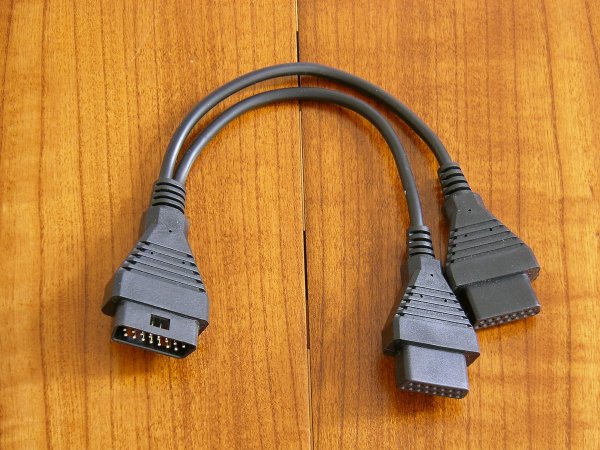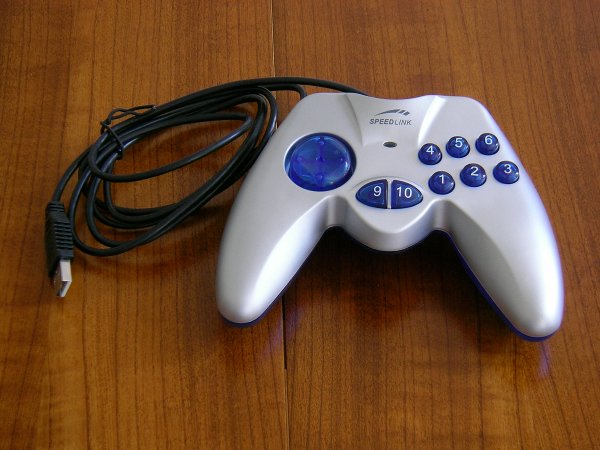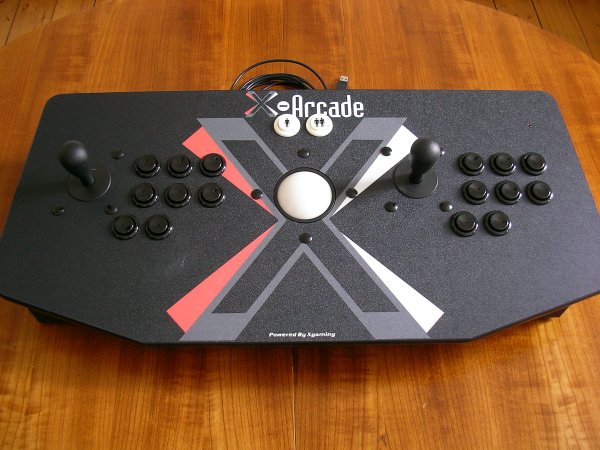|
Connecting vintage controllers to your new PC |
03-Sep-2012 |
Please note that you do not have to use old controllers for playing old games. There are several reasonable alternatives both for controllers and games if you want to get the retro-feeling more easily. However, some people prefer the original controllers to get the exact physical feeling of old times. So, if you are not into authentic retro-gaming just hop to the section of alternatives on this page or find what you are looking for on another webpage.
In the following sections, you will read about the types of controllers that were used in the old days and the types of connectors they had. Further, you are given some technical details you need to know if you want to connect such a device to a modern computer.
Types of controllers
Joysticks
Joysticks were undoubtedly the most common game controllers used in the early days of video gaming. There were two types available: analogue and digital sticks. The digital type is often referred to as an 8-way-joystick. Analogue controllers were the less common, and predominantly used in arcade machines or with personal computers. Video game consoles and home computers preferred the digital layout.
Note that there is a possible ambiguity about the term 'digital joystick': Some people refer to modern joysticks that contain a microcontroller as digital joysticks. More commonly -and on this webpage-, the term refers to old-fashioned 8-way-joysticks.
Trackballs
Paddles
Types of connectors (jacks)
The first challenge in using vintage controllers is physically connecting your old device to your new machine. There are several adaptors available for this purpose, but you need to know what connector and what jacks you have on your hardware. Here are the most common jacks:
Joystick-Port (D-Sub DE-9)
Game-Port (D-Sub DA-15)
Parallel-Port (D-Sub DB-25)
Auxilary-Port (PS/2)
USB-Port
Unusual Ports and hard-wired game controllers
| Some old video game consoles or home computers used unusual ports for their joysticks (like the Commodore C16/116). Others had hard-wired game controllers (like the early Intellivision or the Arcadia 2001). In order to use their controllers on modern computers, you will usually have to cut or solder out the joystick cord and attach an adequate plug (or -in the case of an unusual plug- design a particular adaptor yourself). Typically (when the joystick is digital), the Atari plug is the best to attach because its pins are compatible with the signaling wires of most joysticks. That way, you can afterwards use one of the commonly available adaptors to translate the signals for your computer. In very few cases, you might find an old third-party adaptor leading to an Atari plug that can save you the handcraft. |
Required Hardware
There are little hardware requirements of your computer for a successful connection of old equipment. These days, all personal computers have a USB-port. Further, old-fashioned games rarely need much processing power or a fancy graphical card. So, in most cases, you can just use the cheapest computer available.
However, there are a few devices that work better on a native gameport instead of a USB-port. First, when connecting an old-style trackball through an active USB-adaptor, the integrated microcontroller often has a too low sample rate for processing the frequency of the signals. Second, some USB-controllers have a micro-delay in passing signals, making them inconvenient to use with games that require very fast reactions (e.g. Archon among human players). Thus, it can help to have a native gameport on your computer.
Sound-Card
 |
A cheap Sound-Card providing a gameport jack is a good way to evade the possible drawbacks of an active USB-adaptor. Unfortunately, some new mother-board's south bridges no longer pass the signals of the gameport to the bus. This means that the gameport may not work even when the sound-card is perfectly installed. Additionally, all Windows versions beyond XP no longer have a built-in software driver for gameports. For the 32-bit version of Vista, there is a home-brew driver mentioned by Creative labs available on the web (search for the "Gameport support pack for Vista"). On Linux, you do not have this problem, yet. |
Adaptors
Old game controllers cannot be connected directly to new computers; one or more adaptors are needed to establish a physical connection. Here are the most commonly available adaptors for this purpose:
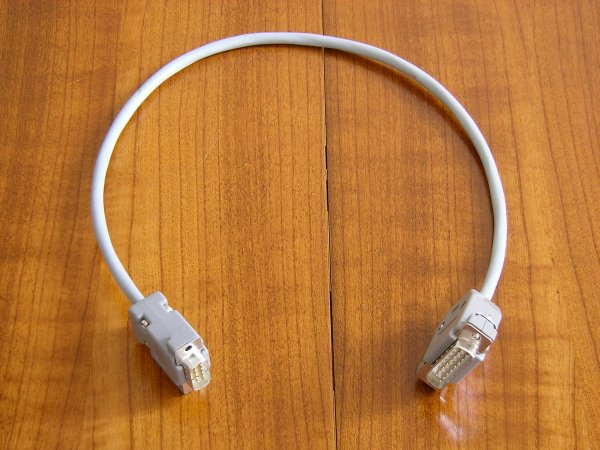 |
A Joystick-to-Gameport-Adaptor is a passive adaptor that can connect an Atari-style joystick to a gameport jack. Since the gameport expects analogue signals, the adaptor has a simple circuit of diodes and resistors integrated to adapt the signals. You can find a construction manual on pinouts.ru or epanorama.net if you do not find a dealer. |
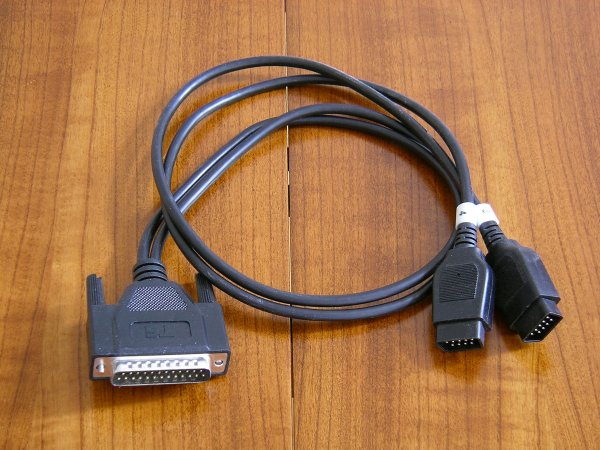 |
A four-player adaptor is a very simple passive adaptor directly connecting wires of the joystick-port to the parallel-port. There is no logic in this equipment. You need a software driver to sucessfully use game-controllers through this device. The PPJoy driver is a convenient solution for Windows platforms. Regrettably, this driver is only available for Windows 98, Me, 2000 and XP. Getting Linux to accept the adaptor is rather cumbersome as you need to recompile the kernel. You will find some instructions on MJM wired. |
For the sake of completeness, I would like to mention that there exist PCI-cards providing joystick ports. These cards were produced in little numbers and are quite hard to come by. Reportedly, most of them experience compatibility problems with recent motherboards and/or operating systems. So, they seem to be only an option for converting an older computer into a dedicated retro machine.
If you cannot find any of the above adaptors for your digital joystick you might try attaching a D-Sub DE9 Joystick Port to a standard keyboard. Instructions for this handicraft work can be found at Folke Rinneberg's site. It works with most known emulators and does not need any software driver.
Required Software
After physically connecting your old equipment to your new machine you will also need some software drivers to have your operarting system accept the old devices as game controllers. Fortunately, most of the drivers are already built into current operating systems (e.g. Windows and Linux). In most cases, you will only need to calibrate your device if anything. Only if you use the parallel port do you need to install a system driver.
The next step is converting your computer into an arcade machine, video game console, or home-computer of your choice. The type of software needed for this purpose is called an "emulator". Emulators allow you to run original old games on your system. There are numerous emulators for all types of old hardware available, and even better, you find them for free on the web as they are usually open-source or freeware. Within each emulator, you will have to adjust preferences to assign the game controller as a valid input device. This is usually very easy, but you must not forget about it.
Beside the emulators you will also need the actual games, preferably as binary images. Transforming old cartridges, tapes or floppy disks into binary images requires a lot of technical skill, much more than connecting old joysticks to new machines. So, a thorough search on the web for the binary image you want can save you a lot of frustration. Anyway, it is advisable to know about the legal issues when using such downloaded images. If you own the original games, you are usually on the safe path.
Windows
Most emulators and hardware drivers for vintage game controllers are available for windows platforms. In most cases, they run directly off-the-shelf. Some known issues are using native gameports or the four-player-adaptor with Windows Vista or Windows 7 and a few minor display problems with newer versions of Direct X or graphical drivers. So, if you want to setup a dedicated retro-machine, you might want to consider installing an older version of Windows.
Linux
As most emulators are open-source it is also possible to run them on an operating system that is open-source. However, you might have a few more difficulties getting your vintage controllers to work properly; you do not find easy-to-install drivers for some equipment (e.g. for the four-player-adaptor) and some equipment is inconvenient to setup since joystick calibration can be a little annoying under Linux. On the other hand, you can use native gameports and -if compiled correctly- the four-player-adaptor even with newest OS releases on 64-bit machines, and SDL keeps most graphical driver problems away from you.
Modern alternatives to old controllers
As mentioned above, there are very convenient and cheap solutions for an occasional retro-game if you do not insist on using your original joysticks from the 1980s. Here are some:
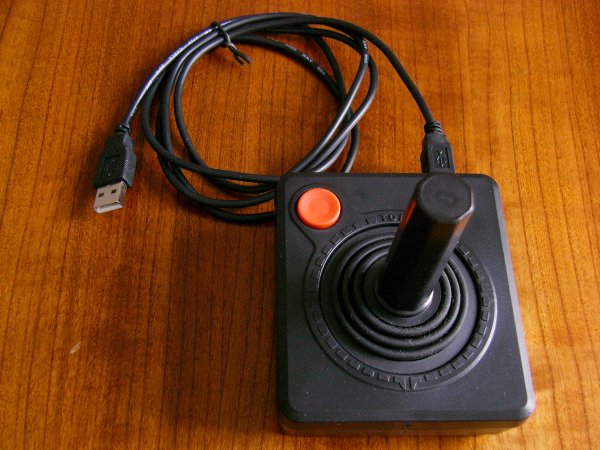 |
A refurbished version of the Atari CX-40 joystick can be ordered for ~12 € (15 US$) at Legacyengineer.com. This stick is actually better than the original Atari as it contains more durable switches and, of course, a USB-connector. The USB-micro-controller is very responsive, so you can even play Atari Decathlon with it. Note that this stick is generally only good for playing retro games. |
A word from the author
There is no commercial interest related to this side. After having found lots of helpful information about all sorts of particular problems on the web, I wanted to give something back to the community. The contents of this page expresses my personal experience with retro-style game controllers. I have not put every dodge discovered over the years. So, feel free to ask me or to comment on the information given here at player at retroconnection dot de
FAQs
Is there any single 'best' solution for attaching old devices?
Not really. A responsive Joystick-to-USB-adaptor is the best regarding functionality and installation. Taking cost into account, the Joystick-to-Gameport adaptor is a better option and it works fine with most devices, but you need a gameport on your computer. The four-player-adaptor is also very good, but you need a parallel port on your computer and it does not run well with newer versions of Windows. If you have USB-jacks only you need an active adaptor. So, you have to see what you have got and what you need.
Can I connect my joystick via parallel port even under Windows 7?
You can, and it works ...somehow. On my system, the PPjoy driver exhibits problems with the fire buttons. So, Pac-Man is no problem - Space Invaders is.
How do I know which USB-adaptor does not generate a delay for steering commands?
Hard to tell in advance. Most USB-adaptors are rather inexpensive. I have bought several designs and tested them. The bad ones I just gave away. If you do not want to take any chances and the price does not matter get a Joymaster.
Where can I get the adaptors?
There are a few specialised shops on the web (e.g. Vesalia for the Four-player-adaptor or Spacetaxi64 for a Joystick-to-USB-adaptor). Ebay and Amazon are also good places to find adaptors. Just make sure you use good search terms: something like "Atari joystick interface" or "USB joystick adaptor" or similar.
What is the motivation for taking on the hassle of attaching old joysticks and installing emulators on new computers as opposed to using the original consoles that work with the sticks and the games right away?
My personal killer reason is the jitter and distortion of the old consoles' analogue RF connections to your TV set. After eight hours of continuous play your eyes feel like popping! New computers provide a crisp and clear picture on flicker free flat screens and do not produce interference on the video and sound channel (letting you play at least eight and a half hours without your eyes popping). Besides, you can use convenient tools for digitally taking screenshots. And last but not least, you can install many emulators on just one PC instead of inundating your room with loads of old hardware.
